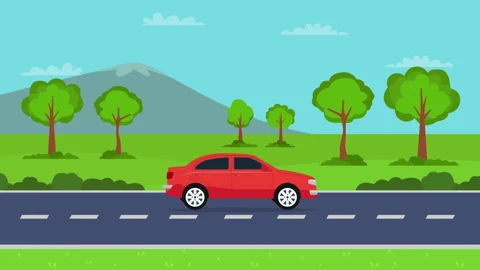Car Animation Trends Shaping the Future
Hello there! If you’re anything like me, the idea of cars zipping around with a life of their own sparks a certain kind of joy that’s hard to describe. It’s not just the roar of the engines or the sleek lines of the bodywork; it’s the stories they tell and the personalities they embody. Welcome to the intriguing realm of car animation, a niche that’s revving up more than just engines in the digital era. Whether you’re an animator, a car enthusiast, or someone who enjoys a good animated flick, buckle up as we embark on a journey through the vibrant world of car animation.
Table of Contents
The Evolution from Sketches to Screens
Car animation, at its core, is an art form that breathes life into vehicles, making them characters of their own. But how did we get here?
- The Early Days: Initially, car animations were simple. Think of early cartoons where cars had eyes and mouths, wobbling down a road drawn on a piece of paper. The charm was undeniable, but the technique was rudimentary.
- Technological Revolution: Enter the digital age, and car animation underwent a transformation. Tools and software evolved, allowing for more sophisticated designs and movements.
The 2D Era: Where It All Began
Before cars could leap off the screen in 3D, they cruised in the 2D realm. 2D car animation laid the groundwork for what was to come, offering a blend of simplicity and charm that still captivates audiences today. It’s where creativity met constraints, pushing animators to think out of the box—literally.
Shifting Gears: The Rise of 3D Car Animation
As technology accelerated, so did the ambition of animators. 3D car animation emerged, turning vehicles into hyper-realistic models or stylized characters that could express a range of emotions. This transition wasn’t just about adding a dimension; it was a leap towards immersive storytelling.
- Realism: For automotive commercials or simulations, 3D animation allows for stunning realism, showcasing the sleek design and performance of cars in ways that feel tangible.
- Character and Story: In animated movies, 3D cars are not just props but protagonists. They have personalities, challenges, and arcs that resonate with audiences of all ages.
Under the Hood: The Process of Animating Cars
Animating cars, whether in 2D or 3D, is no small feat. It involves a blend of artistic vision and technical prowess. Here’s a peek into the process:
- Conceptualization: It all starts with an idea. What’s the story? What role does the car play in it? This stage is all about imagination.
- Design and Modeling: Artists sketch and then model the cars, paying attention to every detail—from the curvature of the body to the shine on the headlights.
- Rigging and Animation: This is where the car gets its moves. Rigging is like giving the car a skeleton, and animation is about making it dance (or race, or stumble, depending on the script).
- Texturing and Lighting: Here, the car gets its final look. Textures make the surface look realistic (or cartoonish, if that’s the goal), and lighting adds depth and emotion.
The Road Ahead: Innovations and Trends
The future of car animation is as exciting as a twisty mountain road at sunset. Here are a few trends to watch:
- Augmented Reality (AR) and Virtual Reality (VR): Imagine walking around a virtually animated car or sitting inside it, all from the comfort of your home.
- Artificial Intelligence (AI): AI is starting to play a role in animation, from generating realistic movements to creating entire scenes.
- Sustainability Stories: As the world becomes more eco-conscious, expect to see more animations featuring electric cars and exploring themes of sustainability.
Why Car Animation Matters
You might wonder, “It’s just animated cars, right?” But it’s so much more than that. Car animation:
- Fuels Imagination: For creatives, it’s a playground of endless possibilities. For viewers, it’s a source of inspiration and wonder.
- Drives Innovation: Pushing the boundaries of animation techniques leads to advancements that spill over into other fields.
- Connects Cultures: Cars are universal. An animated story about a car can resonate with audiences around the globe, transcending language and cultural barriers.
In Conclusion: A Journey Worth Taking
Car animation is a fascinating intersection of art, technology, and storytelling. It’s about bringing inanimate objects to life and taking audiences on unforgettable journeys. Whether through the nostalgic charm of 2D car animation or the immersive experience of 3D car animation, this niche art form has carved its unique path on the animation highway.
As we look to the future, the possibilities are as limitless as the open road. With advances in technology and a growing appetite for animated stories, cars will continue to be much more than just vehicles on our screens. They’ll be heroes, companions, and icons, driving stories forward and taking us along for the ride.
So, the next time you watch a car animation, take a moment to appreciate the creativity and craftsmanship that went into bringing those vehicles to life. It’s a testament to the power of animation to turn the everyday into the extraordinary. Happy viewing, and may your journey through the world of car animation be as thrilling as a high-speed chase on winding roads!




